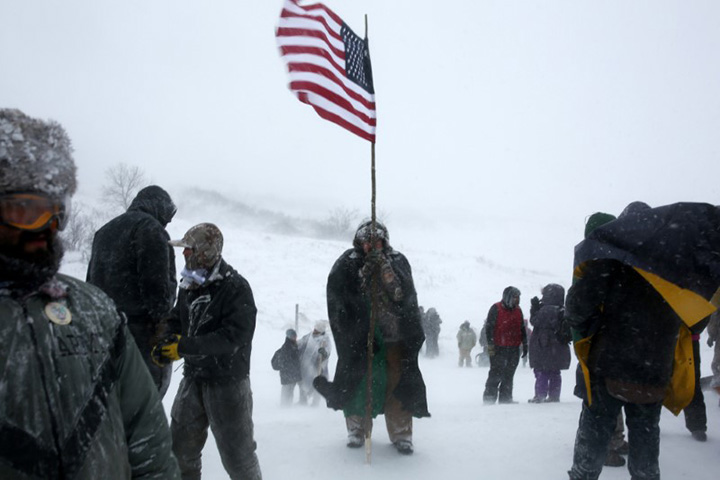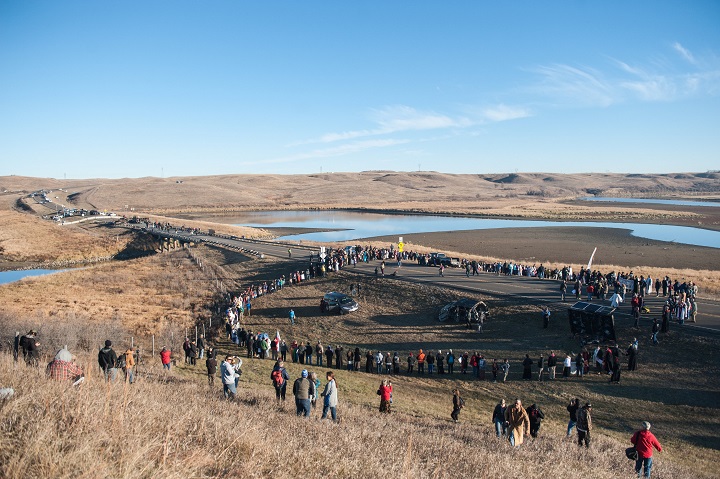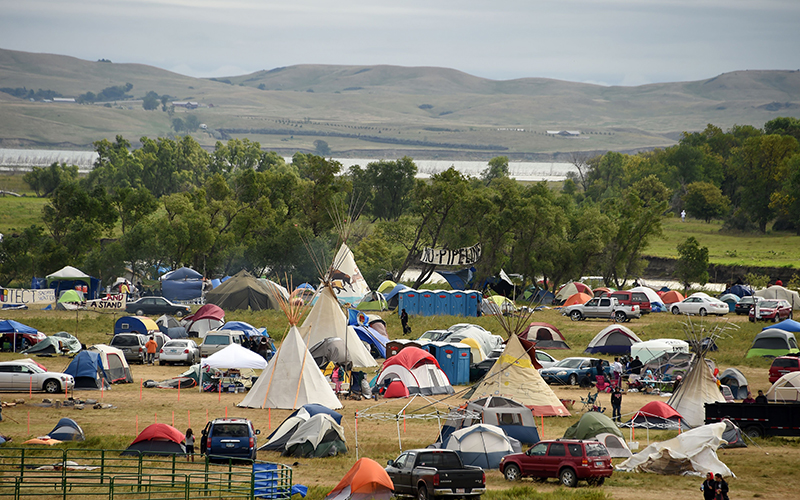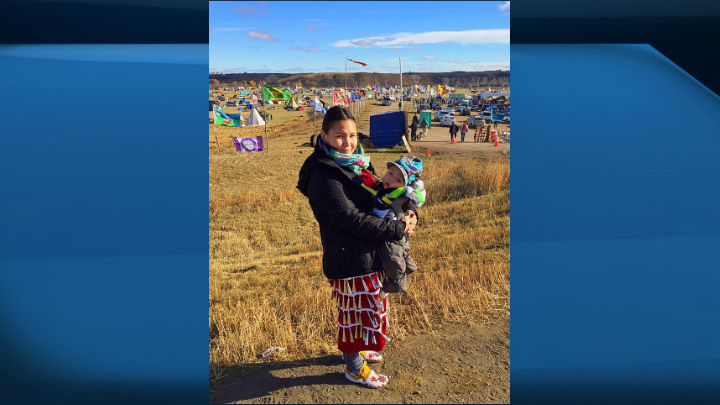Gerald Scott’s perspective has shifted since he spent 10 days on the Standing Rock Sioux reservation in North Dakota which — until early last year — was the site of months of high-profile protests against the Dakota Access oil pipeline.

READ MORE: Edmonton photographer wins prestigious award for Standing Rock coverage
Scott, who is from the Swan Lake First Nation in Manitoba, wanted to take a stand against what he saw as trampling of Indigenous rights.
“I’m a warrior by nature. I’m a warrior by heart.”
Scott has since focused his fight on making pipelines safer. More than a year after Standing Rock, he was one of 60 Indigenous people from Western Canada to complete a three-week pipeline monitoring program at SAIT Polytechnic in Calgary.
The course, a pilot project, delved into inspection techniques, pipeline operations and safety — all through an Indigenous lens. With the classroom portion complete, trainees will embark on either a research project with an industry mentor or a work placement. Some students will train this summer with a dog handler to learn how potential leaks can be sniffed out.
READ MORE: NEB monitoring of pipeline safety still ‘inadequate’: audit
Armed with his new knowledge, Scott says he can better represent his First Nation’s interests in talks with his employer, Calgary-based pipeline giant Enbridge Inc. The company’s extensive Line 3 project crosses Swan Lake land, and knowing what specific inspections and maintenance work to demand could be helpful.
“Now I’m still a warrior, but I just want the best deal for people.”

Get breaking National news
Scott started working for Enbridge as a digger, but has more recently acted as a community liaison. The company encouraged him to take the monitoring course and he’s hoping for a pipeline safety career that will allow him to stay close to home.
READ MORE: Enbridge fined $1.8M USD for missing pipeline inspection deadlines
Fellow trainee Kelsey Jacko from Cold Lake First Nations says he’d like to use his training to work with an Indigenous organization monitoring pipelines.
“My dream job is looking after my people, make sure their livelihood is looked after, their health and well-being for the future, for the kids yet to come.”
Heavy oil is big business around Cold Lake in eastern Alberta and Jacko is concerned about its effect on the environment, particularly on caribou.
He says the industry’s presence is a reality.
“We can’t turn back time, but it’s a struggle. Where’s the balance between economics and the environment?” Jacko says. “Our First Nations have to get out of poverty. A lot of our First Nations are living in Third World living conditions.”
Engineer Deanna Burgart, a member of the Fond du Lac Denesuline First Nation in Saskatchewan, was a program instructor and helped develop its curriculum.
She says it was important that Indigenous students could see themselves reflected in the course material — by drawing on case studies relevant to their experiences, for instance.
“I just firmly believe that the improvement of the relationships between Indigenous and non-Indigenous peoples and industry and government will happen when we are all more engaged and we’re all more informed and we’re all empowered.”
READ MORE: Alberta methane releases underestimated: ‘If we thought it was bad, it’s worse’
The program was conceived through InnoTech Alberta, a subsidiary of provincial research and development agency Alberta Innovates. Its $566,000 budget came from provincial and federal grants.
Shauna-Lee Chai, an InnoTech scientist who managed the pilot, says the course was in high demand with 200 applicants for the 60 available spots.
She says she believes Indigenous people are uniquely positioned to watch for problems along pipelines that often cross through remote areas.
“The traditional way of life that many Indigenous people still practice have them out on the landscape. They’re living in remote communities. They’re hunting, fishing, trapping, collecting berries and medicines,” Chai says.
“They have that vested interest. The lands that they are monitoring are their backyards, and so it’s in their interest to keep it healthy.”















Comments